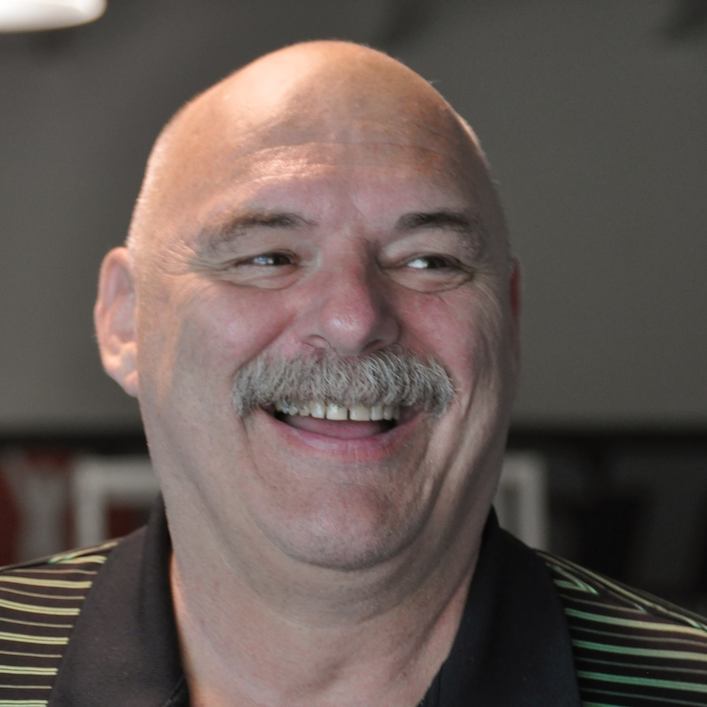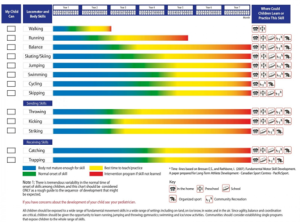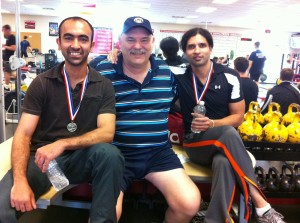 Grant “Rufus” Gardis is a guy I’ve been lucky enough to know for the last 5 or 6 years, and I’ve got to admit, he may be one of the sharpest coaches you haven’t heard of.
Grant “Rufus” Gardis is a guy I’ve been lucky enough to know for the last 5 or 6 years, and I’ve got to admit, he may be one of the sharpest coaches you haven’t heard of.
The guy is just a wealth of coaching knowledge, and it’s an honor to chat with him here today.
Please, take the time to read all of this interview – I guarantee you’re going to get some great information from it!
Best
MR
Rufus, thanks for taking the time to be with us here today. Could you start by telling us a little bit about yourself and your current position?
Thank you Mike for having taking the time to interview me. It is a real honor for me to be here with you.
I started out coaching high school football coach in 1980 and became the strength coach for our team simply by virtue of the fact the I had lifted weights longer than anyone else on the staff.
We were at a small catholic school that was not very good and had, for the most part, even worse athletes. That is where I developed my interest in athlete development.
We were so bad in terms of talent that I started looking for a way to develop the athletes that we had. Fortunately, I was on a staff that allowed me the freedom to experiment and try different things.
You have to remember that at that time, there wasn’t a whole lot, if anything, written about the development of an athlete. At least I never saw it.
No talent, eh? Sounds kind of like our boys basketball team in high school!
At what point in time did you realize you wanted to become a coach?
I can’t really pin point a specific time necessarily because I was always coming up with different ideas about play calling or how I would handle a team.
Remember, this was a time of legendary coaches – Vince Lombardi, Bear Bryant, and Woody Hayes.
When I was in college, I got hurt and I couldn’t play anymore so I asked if there was anything I could around the football office or on the field and they gave me a job as a student assistant, which is just 1 rung lower than a graduate assistant.
It was great. I did everything. It was during this time I decided I wanted to coach college football.
Tell us a little bit about your background – where you’ve been, previous positions held, etc.
I have coached both in high school and the private sector where I got the opportunity to work with all different age groups and levels from 8 year olds to pro and college players.
I have been fortunate enough to be selected to coach various youth and junior national weightlifting camps for USA Weightlifting at the Olympic Training Center in Colorado Springs.
Let’s talk more about your work with kids. You’re currently the middle school strength and conditioning coach at Center Grove. What do your day-to-day responsibilities look like?
My main responsibility here is to get the athletes I have ready for the work they will do in the high school weight room. This means everything from working on mobility and stability, to teaching the exercises that they will use once they get to the high school, including the Olympic lifts.
I am lucky in the fact that the head strength coach has told me not to worry making them stronger, just worry about perfecting the technique. I also have a small weightlifting team that competes in USA Weightlifting sanctioned meets.
Let’s talk about training young athletes – I know his is really open-ended, but where are we missing the boat with regards to training young athletes?
Oh man, you have really opened a can of worms with this question. Where are we missing the boat?
My opinion is most everywhere.
We are burning kids out at too early an age by practicing and playing too much.
We aren’t allowing skills to be perfected because we are too worried about playing and winning on the next game.
In our area, we have approximately 1000 kids playing football in our little league program. We only have 80 playing on the varsity and junior varsity teams at the high school.
Why is this?
I believe it is because we haven’t taken the time to develop ALL of the kids. We go after the early maturers and don’t consider the late developers.
How many kids have we missed because of this philosophy?
What would happen if we could keep 100 more of these kids on the JV and varsity teams?
You don’t think that we couldn’t find some players that might help us win a few more games out these 100? I think we could.
We need to concentrate on development and not worry about winning a 2nd and 3rd grade championship.
We need to concentrate on basic fundamentals of sport. Catching, running, throwing, positioning, defending and such, not blocking and tackling.
This is for everyone, not just the skilled athlete. This applies to any sport.
I couldn’t agree more. And along those same lines, how do you try to educate and advise parents and coaches as to the ills of early sports specialization?
I try to build some sort of relationship with them and explain to them what we are doing and why. I will email them articles I find about this topic and send it to them.
It’s really difficult because they are all caught because it goes against everything they have been taught or seen. The easiest ones to talk to are the dads who college played or pro ball. For some reason they get it.
That’s interesting – I can see why they would get it, but you would also assume they are the group that would “push” their kids the most.
We’ve often talked about the need for play with young athletes. Why do you feel as though play is such an integral part of an athletes development?
When I talk about play, I am talking about kids playing by themselves and with no parents around telling them what to do or telling them to do this or that. Some times it is referred to as free play.
Play allows kids to discover for themselves what works and what doesn’t and it allows them to develop skills they to compete with their buddies.
When I was growing up, if you couldn’t play at the level of the other guys, you didn’t get chosen on a team. So if you wanted to play, you had to go practice by yourself until you could meet the standard.
You want a group to accept you, you had to prove yourself.
Play also allows you to free yourself to make mistakes trying things. You throw a behind the back pass during a basketball game and it goes into the next yard, there is no parent or coach yanking you out of the game and screaming at you never to do that again.
You become creative and you learn to make adjustments. If you are being coached all the time, it takes away some of that creativity.
The other thing about play is that it is just fun. One of your trainers, Lance Goyke, is having some of his adults playing handball, soccer and hacky sack as part of their workouts and they are having a blast.
One of the best things I have done is to let the kids come and play for 20 minutes before we start training. Since we train right after school, it allows them to release some pent up energy that they have been building all day at school and the result is that the training is better and much more focused.
They can play any game they want but everybody is included.
The other thing that we do is with my weightlifters, because they train 5 to 6 days a week, is that on Wed we have play day. They totally control it. They control not only what they play but also how long. It serves as a great recovery tool for their next workout.
I love it. I’ve also heard you say that when a concerned parent brings a young child to you for coaching, you refer them to the local gymnastics facility!
Is that true, and if so, why do you do that?
Yes it true. I think that gymnastics is the foundation for all movement. Every kid in America should do gymnastics before anything else.
Gymnasts come to me and they are coordinated, strong, and have a great body awareness. For the most part they can feel what they are doing better than other kids. For me this is very important in teaching them skills of weightlifting.
If you were the President of the Young Athletes Development Association (YADA for short, and yes, I just made that up) what steps would you take to ensure we’re giving our young athletes the best chance for success?
As President of YADA, the emphasis would be on Long Term Athletic Development first and foremost. There would be no little league as we know it.
 The first thing that all kids would participate in would be gymnastics for the the reasons I stated above. Every child would have a foundation of Physical Literacy where everyone would know and be proficient at running, jumping, throwing, catching, kicking, striking, swimming, skating, etc.
The first thing that all kids would participate in would be gymnastics for the the reasons I stated above. Every child would have a foundation of Physical Literacy where everyone would know and be proficient at running, jumping, throwing, catching, kicking, striking, swimming, skating, etc.
The chart on the right shows better what I am talking about. (Note from MR: Double clicking on this image will make it a bit bigger.)
With this kind of foundation, I feel I can teach a kid the skills of any sport. How good they become at them, I think is determined partly by who they chose for parents (genes) but they can all learn the basic skills of all the sports.
Kids would be exposed to and learn many different sports from all seasons and any games would be played on small courts or fields to allow as many touches as possible.
I am also a big advocate of combat sports such as wrestling, boxing, and martial arts because it develops a certain mental and physical toughness.
In this way kids can gravitate towards the sports the most enjoy and are best at. Coaches will only be needed to teach basic skills of these games but the actual games will be run by the kids from choosing teams to making rules. There would also playgrounds everywhere so that kids could run, climb and play.
As an added by product of this type of training, kids will be more apt to stay active in sports their entire lives and thus we will be doing our part to reduce the obesity problem.
I love it, and we’ll maybe you and I will get together and start YADA some day.
Let’s switch gears a bit, as you’re also very well known for coaching Olympic lifters. When did you start training O-lifters, and how did you get started there?
I don’t really remember the year, but it was sometime in the early 90’s. I was still coaching football at the time and I was looking for a better way to train our athletes.
 I knew we needed more athleticism and explosiveness and I happen to go to a clinic hosted by the strength and conditioning coach for Indiana University basketball, Frank Eksten. There I heard a bunch of people talk about how the Olympic lifts can help build explosiveness.
I knew we needed more athleticism and explosiveness and I happen to go to a clinic hosted by the strength and conditioning coach for Indiana University basketball, Frank Eksten. There I heard a bunch of people talk about how the Olympic lifts can help build explosiveness.
So I got on the phone, I called Frank and begged him to be my friend.
I started hanging around his weight room in Bloomington and calling him and asking questions. He advised me to take USA Weieightlifting’s club coaches course and learn how to do the lifts. After I did that he then told me I should get the team up and start competing.
As an Olympic lifting coach, I can only assume you’re a big believer in using the lifts to improve athletic development.
What role do you see the O-lifts playing in the development of your athletes?
For me, they are another tool in the tool box to be used in the development of the athlete. There are many ways to increase power and explosiveness. I just think you get the biggest bang for your buck by doing the lifts.
I also think you have to use them wisely. Would I teach a pro athlete to do the lifts if he has never done them?
No it would be a waste of time when we could be doing something else more productive.
I thought you made a great decision this summer when you were training Roy by just having him do pulls. You can generate the same power output without having to teach the catch.
In my situation, I want all the kids to know how to do them properly, so I can afford to take the time to teach them because of our long term plan.
Taking that a step further, as a coach, what are some of the biggest technical issues you see when an athlete is learning the lifts?
Probably the biggest thing I see is that the athlete struggles with is when the barbell is at the top of the knee, the athlete wants to use his back to bring the weight up to the power position instead of using his hips to do it.
The hips and upper body should move as one entity thereby creating the mysterious double knee bend that allows the lifter to move into, what I call, the jump position that prepares the lifter for the jump shrug and pull under.
Okay, let’s start to wrap this thing up a bit. If an entry-level coach or intern came to you for advice on being successful in our industry, what would you tell them?
The first thing I would tell them is to get an internship at IFAST. I am fascinated by the way you guys have created an unbelievable environment of learning and teaching there – not just different exercises, but of learning how the body is supposed to work and all the different ways to you use to get it back to functioning normally again.
It’s like “The Talent Code” for learning about strength and conditioning. The interns that I have know who come thru here leave with a huge thirst for knowledge that you guys have imparted to them.
Next I would have them coach young kids. This is where it all starts because you have to teach everything from the ground up. You learn really fast to be creative with not only ways in which to teach proper technique but also and coming up with cues that these kids will understand.
I can give an adult a cue a young kid may not have any idea what I am talking about. This also happens in reverse. I spend so much time talking to kids that my cues for them may not make any sense to an adult.
The last thing that I would tell them is to never stop learning. Don’t ever think you know it all, whether it be a anatomy, coaching, exercises or whatever. You can always improve and learn more.
Last but not least, what is one mistake that you’ve made along the way, and how did you learn from it and grow either as a coach, professional, or human being?
Man, there have been so many, but probably the way I coached my own kids.
When they were young I had no idea about such things as Long Term Athletic Development, so I did what most people do and let them choose a sport and pushed that sport forever.
Obviously, now I would do it totally opposite of the way I did it with them. Now I am blessed with 5 grandchildren who will have a much better experience. They all have been taking gymnastics and the 2 boys are playing basketball right now.
I have taken them ice skating and the youngest boy, because of all the snow we have had this winter, just discovered snowboarding. They all come to my gym and run around and make up games and try to climb the ropes and play on the monkey bars.
Rufus, thanks a ton for being with us here today. Where can my readers find out more about you? (Feel free to plug any/all websites, products, etc.)
I’m just starting to learn to write a blog Rufus’s Blog or people can email me [email protected]
Thanks again Rufus!
